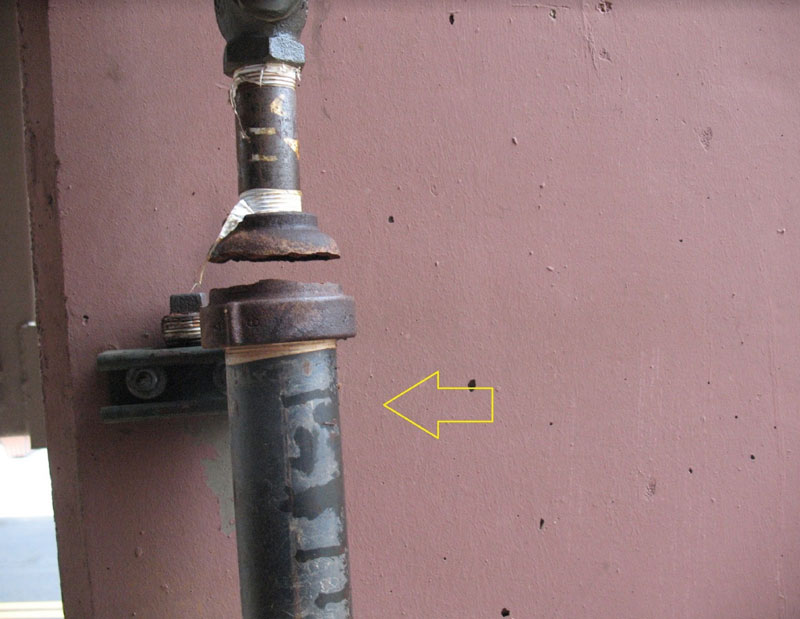Drum drips are an important part of a dry fire sprinkler system because they help keep the system performing as it should. But, since dry fire sprinkler systems are often installed in locations where temperatures can drop below freezing, it’s important to check and empty drum drips regularly when colder weather sets in.
If you have a dry sprinkler system, but haven’t heard of drum drips before, or are looking for more information on how to perform regular drum drip maintenance, this article will cover everything you need to know. Let’s take a look at what drum drips are, why it’s important to check them in cooler weather, and how to perform drum drip maintenance.
What Are Drum Drips?
Drum drips are designed to capture any water that may have entered a dry sprinkler system. Also known as auxiliary drains, drip legs, and condensate drains, drum drips work to keep water out of your dry sprinkler system, so it can perform properly in the event of a fire. Because drum drips are the low point of your sprinkler system, designed to collect water, it’s important to check them often in the winter. If the water collected in a drum drip freezes, like the image below, it can cause the pipe to burst, which will trip your entire sprinkler system, leading to a number of problems.

With that in mind, let’s take a look at where to find drum drips, and how to perform the regular maintenance that will keep your sprinkler system from freezing this winter.
How to Find Drum Drips?
When it comes to locating drum drips, it’s good to know that NFPA standards require that all drum drips within a building be identified so they can be easily maintained. NFPA standards state that the location of all drum drips should be included on an informational sign at the system’s control riser. That’s a good place to start to determine how many drum drips your system has, and where they are located. From there, you shouldn’t have to look too hard to find the drum drips within your buildings, as they should be well-marked. They’ll look something like this:

It’s also good to remember that if you work with a fire protection contractor on a regular maintenance schedule, your technician will already know exactly where to find and empty your dry fire sprinkler system’s drum drips.
When Should I Perform Drum Drip Maintenance?
All dry sprinkler system maintenance should be performed regularly. It’s a good idea to get on a quality fire protection specialist’s regular maintenance schedule, just to make sure your dry sprinkler system is always ready to protect your building in the event of a fire. That said, drum drips do require a bit of additional maintenance, especially in the winter.
Drum drip maintenance should be performed weekly during the fall and winter months. Emptying out drum drips regularly helps to prevent freezing. When the drum drips are empty, or nearly empty, there’s much less risk of a serious pipe burst.
It’s also important to perform drum drip maintenance for a while after your dry sprinkler system has actuated. After a dry sprinkler system discharges, you should perform drum drip maintenance daily. Your system is at its most vulnerable in the few weeks after it has been actuated because a lot of moisture and condensation can collect in those drum drips. It’s important to empty them daily until you notice that several days have passed with no water in the drain valve. Then, you can get back to your regular maintenance schedule.
How Do You Perform Drum Drip Maintenance?
Now we know what drum drips are, how to find them, and how often to perform maintenance. Let’s take a quick look at the steps you’ll need to take to perform drum drip maintenance. The most important part to remember is that you’ll need to isolate each drum drip before you empty it. This will ensure that your dry fire sprinkler system doesn’t lose air pressure and trip the dry valve (which would cause water to fill the system). With that in mind, here’s how you go about emptying a drum drip:
- Close the top isolation valve on the drum drip. This isolates the drum drip from the rest of the system, ensuring you’re maintaining appropriate air pressure in the system.
- Move a bucket under the drum drip.
- Open the bottom isolation valve. This will allow any collected water to drain into the bucket.
- Once the valve has drained, close the bottom isolation valve.
- Re-open the top isolation valve to ensure the drum drip is back in the system and can continue collecting any water or condensation.
By following these five simple steps weekly throughout the winter, you can ensure your drum drips do not freeze and your sprinkler system is able to keep your building safe and secure.
Drum drips are a small but important component of your dry sprinkler system. If this is the first time you’re hearing about them, or if it’s been some time since anyone has looked at your fire sprinkler system, it might be a good idea to schedule a routine service call. The Vanguard Fire & Security team would be happy to schedule an appointment at your convenience — give us a call at 800-444-8719 or leave us a message online today; we’re here to help!


